The sun is riding high by the time we polish off a plate of puris and parval bhaji topped with a sickly-sweet, thickly curled jalebi.
Our boatman Pramod — a tall, dark, smooth-skinned man with sharply angled features — is waiting for us on the banks of the Ganga. At the ghat, we find women in wet saris and pot-bellied, bare-chested men, immersed in the river, using tiny aluminum pots to pour the holy water over their heads.
We clamber onto the boat and head east. The river, a sparkling bright green in the morning sun, stretches ahead of us. With me are Nachiket Kelkar, a young, soft-spoken researcher with Ashoka Trust for Research in Ecology and the Environment and Subhasis Dey, a spirited, deeply empathetic researcher with Vikramshila Biodiversity Research and Education Centre. Both are walking, talking encyclopedias on the ecology of river dolphins and fisheries in this region, having worked with communities on the river for over a decade.
Together, we are searching for dolphins in eastern Bihar’s Bhagalpur district. Here, a 67-kilometre stretch of the river that lies between the towns of Sultanganj and Kahalgaon is home to the Vikramshila Gangetic Dolphin Sanctuary, the only reserve legally dedicated to India’s national aquatic animal: the most ancient of all cetaceans, the blind, side-swimming, endangered Gangetic river dolphin or Platanista gangetica gangetica.
The holy river
As we coast along the river, a row of toddy palms comes into view on the distant south bank. A couple of decades ago, the river lapped at those palms. Today, the waterline is about half a kilometer away.
It’s our first visual marker of the extent to which flows in the Ganga have been steadily reducing: this year, the depth sensor tells us, it’s at an all-time low.
Tear-shaped silt islands or diaras, dotted with clumps of sedge, grass and local vegetation, rise from the water. These islands that emerge from the river, and are reclaimed by it at will, are full of life. Two bright-beaked skimmers perch on one edge; lesser whistling teals brown an opposite edge; open-billed storks forage in the shallows; a row of hard-shelled tent turtles basking in the sun plop back into the river in sudden alarm at the putt-putt of our boat.
Walls of silt rise up from the green waters on both sides of the river, pocked, like ancient computer punch-cards, with the homes of bank-mynas. The birds flit in and out, dipping and rising in a murmuration.




A grave greater adjutant stork wades past us, its wizened face wary as it examines us. Two more display their massive black and white wingspans further out on the diara and a fourth bird makes an awkward landing. This part of eastern Bihar, one of only three regions where storks breed, has been a breeding site for the endangered stork species. There is, reportedly, a stable population of 300 individuals here.
All along the Ganga-Brahmaputra-Meghna basin, https://rqes.ca/base/bumimywal/ diaras are claimed and ‘owned’, farmed and patrolled. The silt is as fertile as it gets, and the claim across the basin is that vegetables grown on these silt-islands are the tastiest in the world. Silt transforms floodplains into food bowls. Silt makes deltas. Silt is the silent, unassuming hero of South Asia. And the Ganga is probably the siltiest river in the world, even more than the Amazon.
Tumbling down from the Gangotri glacier some 1,500 km to the north-west, in Uttarakhand’s Himalayas, the Ganga begins its descent as Bhagirathi. Mixing Alakananda into itself at the multihued confluence of Devprayag, the river cleaves the Himalayan mountains, picking up massive amounts of silt along the way, and hurtles down towards the plains. Its white waters roil past Rishikesh, placate at Haridwar, and flow down to the floodplains of Uttar Pradesh.
The holy river turns putrid at Kanpur, and is so severely extracted that it is nothing but sand when it flows into Allahabad. Here, the waters of Chambal remake its flows. Defying all scientific odds, its dark waters purify a million sins at Varanasi while taking in more foul foam, fecal matter, chemicals and cadavers.
And then the Ganga enters Bihar.
After suffering the conurbations and confusions of modern civilization, the river is renewed. The Ghagra, Gandak, and Kosi rivers, coming down from the Nepal’s side of the Himalayas, infuse it with fresh life. In Bihar it is no longer the ‘holy waters of Gangotri’ but the sum of its tributaries. That is its savior. It meanders now with fresh waters and braids its way through the floodplains for another thousand kilometers, down to West Bengal and Bangladesh, en route to its home in the Bay of Bengal.
We have intercepted the river in the lower floodplains. Its swatch here is arced with ox-bows and punctuated with comma-shaped diaras — silt islands that are neither completely land nor water. Soon, the river will drink from the clouds, its flow will be largely fluvial and it will try its best to erase memories of the abominations upstream.
In search of the Gangetic dolphin
],[https://www.peepli.org/wp-content/uploads/2016/09/ganga_sunset-1000x667.jpg,(medium)],[https://www.peepli.org/wp-content/uploads/2016/09/ganga_sunset-1600x1066.jpg,(large)])
From the lower observation deck of this boat specially outfitted for dolphin surveys, three pairs of eyes — two experienced, one novice — seek signs of the trademark arc of soft grey, of a beak-like snout cleaving the surface to breathe, of the gentle curve of a dorsal fin diving back in: the Gangetic dolphin or “ Soons,” which sounds the same as a nasally pronounced “sauce.”
We’d spotted one when we had pushed away from the shore, but have seen none since. This, my researcher friends point out, is unusual — in this season, 70-100 dolphin sightings is par for this short course.
We go past the four kilometer-long Vikramshila Setu (or bridge) at Bhagalpur and past the burning ghat. The Bhagalpur Engineering College hostel comes into sight — the marker for the outer limit of safe passage along the river. Beyond the college, men on horses roam the https://hmccentre.com/referad/cyxetode/ diaras with guns and black flags in hand, waylaying boats, looting and, occasionally, even killing those who refuse to comply with their demands.
Not wanting to tempt fate, we turn around and return to the Sultanganj ghat, traversing a stretch where 15-20 individual dolphins have hung around for years. Now, they are nowhere to be seen.
Speculations abound in the team. Had they been hunted? Had they moved downstream? Had dredging of the river, deepening it for impending barge-traffic, disturbed them? Had they died of other causes?
There were no answers yet, only alarm and concern.
The bane of the barrage
],[https://www.peepli.org/wp-content/uploads/2016/09/empty_stalls-1000x667.jpg,(large)])
On paper, the dolphin sanctuary is a protected stretch of river but in a heavily human-dominated landscape. People all along the route, from Sultanganj to Kahalgaon, use the river for various purposes. There are 3000 fishing families in the area that depend directly on the river, as they have for generations.
Every morning for the ten days I was there we headed to the market to see what fish had come in. That was an indicator of the biodiversity of fish in the river.
The Kahalgaon fish market is shaped like a sleeping ‘m’, lined with open 8ft x 10ft stalls, colored in purples, sunshine yellows, pista greens, fuchsias and electric blues. In the doorway of each stall hangs a huge scale, the weights towering beside it on the scratched, concrete floor. An ice crusher stands at the hump end of the “m” and shudders into use every hour or so, its rhythmic crushing drowning our voices.
We are at Chandan’s purple stall at 7 AM on a late May morning. We perch ourselves on hastily gathered rickety plastic chairs and wait for the market to come alive. The catch should have come in by this time, Chandan says. Maybe the squall of the previous night, where silt flew in from the diaras like white arrows, meant a bad night for the fishers and they’d be late. We’d have to wait and see.
Chandan has never taken to the river to fish, but his father, Dasharathji, now pushing 70, is a veteran fisherman and respected village elder. “We’ve been here about 200 years,” he tells us. “This is our hometown.”
Back then, his family would ferry cargo and people in much bigger boats. Although they fished, they were not dependent only on fishing. But the catch was plentiful. If they put out their nets at 8 am, by noon they’d catch 100 kilos worth of fish. The fish would then be packed in ice that would arrive from Bhagalpur before it was transported to Nabadwip and Chinsurah in West Bengal.
“One year, there was so much Buy Valium Without A Prescription hilsa, so much https://www.chrisflannery.com/case/wofymuxor/ hilsa!”
His face breaks into a toothy smile at the memory. “It sold for just Re 1 for a kilo, and still no one to buy!” These days Green Xanax Online hilsa caught in Indian waters rarely weighs a full kilo and sells for around Rs. 800, the price for choice cuts rising as high as Rs 1,500-2,000 in the festive season.
The river’s stock of fish, according to Dasharathji, has depleted in both biodiversity and abundance. Multiple studies have confirmed that stocks have plunged between 70 percent and 90 percent in the last thirty years.
What we see at the Kahalgaon fish market is no aberration — the story repeats itself the next day, and the next, and the next. We never see the weighing scales outside the stalls move, burdened by the heft of fish.
With nothing else to do, two little fisher boys convert a stall into a recreation room and start up a game of carrom. The other stalls, including Chandan’s, wait for fish that never come.
The same eerie quiet envelops fish markets all along the Ganga.
“Ever since the Farakka barrage was built, Buy Xanax Cod Delivery hilsa, https://healthybalancebowentherapy.com/work/benorazel/ jhinga, Buy Zopiclone 7.5 Mg Online pangas, https://naturallakeland.com/talks/ceharixow/ bachwa, https://plasticsurgeonhq.com/impla/nivapodap/ seelan and other migratory fish are completely finished,” says Mantu, a 70-year-old fisherman. “We don’t ever see them any more.”
Every fisherman, in Kahalgaon, in Barari, in Naugachia, in Koskipur, on both banks of the Ganga, past the confluence of the Kosi, said the same. Buy Bulk Xanax Hilsa ( https://clinicadefertilidadjerez.com/steps/xyridav/ Tenualosa ilisha), the queen of fish, the prized meal in any Bengali household, used to swim up the Ganga, against the monsoon freshet, all the way to Allahabad, to spawn. The young ones would then return to the sea and repeat the spawning cycle come the next monsoon. But that changed when India built the barrage at Farakka in West Bengal. Their upward migration barred, hilsa, tiger shrimp and such plunged to near zero upstream from the barrage. This was the beginning of the collapse of fisheries in the Ganga. Fishermen are quick to identify Farakka as the root of all their ills.
The barrage is definitely to blame but it doesn’t explain the disappearance of non-migratory species of fish, such as https://www.zahrfreighters.com/ware/warirywu/ Hemibagrus menoda known locally as belonda. The blame for that lies elsewhere.




Everyone wants to be fisherman
In 1991, the Ganga Mukti Andolan led the effort to free the Ganga from panidars — feudal water lords who are the equivalent of Buy Clonazepam Online Without A Prescription zamindars in the water. They laid claim to stretches of the river and “owned” everything on that stretch, including fishing or any other use of the river. Fishers were free to choose whether to work or not. But if they worked and refused to pay up in the form of half the catch (which was the norm), they were threatened.
The abolition of these feudal water-lords was necessary but freeing the Ganga from oppressive contracts turned out to be a double-edged sword. Now, anyone could fish anywhere. While that seemed like a win at first blush, it has proved disastrous for both traditional fishermen and the river’s ecology. As more non-fishermen took to fishing, the number of people fishing in this part of the Ganga swelled.
The fishermen of Kagzi Tola in Kahalgaon speak over each other as they rush to explain the destruction of their river as they see it. At first, they say, it was a few fishermen who came upriver from West Bengal and put out mosquito nets to catch fish. Now, instead of 10 fishers there are 100 fishers and these include non-traditional fishermen too. They all set up mosquito nets across the river for all 12 months of the year.
“Earlier, one boat cast one net,” explains Dashrathji. “Now, with cheap nets available, each boat casts ten nets.”
There is a simple way to distinguish the ‘traditional’ fishermen from the free riders. Those who can weave a fishing net by hand are the real deal. ”Non-fishers,” fishermen say, can buy expensive nets but they don’t know how to fish.




The problem with using the the mosquito nets, they explain, is that the weave is so fine it catches everything — gravid fish, baby fish, yearlings. These baby fish — the next generation of riverine stock — die in the nets and are tossed back into the river since there is no market for such small catch. Thus, entire generations of fish are killed on a daily basis, rapidly eroding the river’s stock beyond the possibility of replenishment. If fishing in the Ganga were restricted to hand-made nets, fishermen believe, the river would be fecund still.
For the part-timers, fishing is not a primary business. They depend on their fields, where they grow vegetables. Sustainable fishing is not a priority, intent as they are on making a quick buck. The traditional fishermen, however, have no land and no alternate means of livelihood. They depend on the river for all of their sustenance.
“If we don’t allow the eggs to hatch, if we don’t allow the fingerlings to grow, how can we expect to eat tomorrow?” This is a refrain we hear across traditional fishing communities in the Ganga-Brahmaputra-Meghna basin.
To add to the fishermen’s woes, oppressive panidars have now been replaced by armed bandits. Marauding the diaras, these gangs regularly target fisherfolk. “They waylay us with our fish and force us to cook and they take our fish away,” says Dashrathji. “If we don’t comply, they could kill us.”
There are several such rival gangs, all of them armed and dangerous. The dolphin-survey team has been caught in crossfire twice, an unwitting bystander in a gang war that never ends.
Dreams held hostage
],[https://www.peepli.org/wp-content/uploads/2016/09/ghat_kahalgaon3_color-1000x667.jpg,(medium)],[https://www.peepli.org/wp-content/uploads/2016/09/ghat_kahalgaon3_color-1600x1066.jpg,(large)])
Further upstream, near Bhagalpur, Suresh Babu’s family knows all too well the changing dynamics of the river. He is 72 and, like Dasharathji, comes from a family that has lived by the river for generations. Decades ago, they ferried people and cargo across the river. There is a nobility to this profession, conferred by mythology, that the fishing community of Mallahs relate proudly.
Mallahs are the same community to which Kewat – the boatman who in the Ramayana ferried Ram, Laxman, and Sita across the Ganga, belong. While the fishermen across the border in Uttar Pradesh have used this association to curry benefits as a community, the Mallahs in Bihar have remained more diffident, are landless, and rank among the poorest and most marginalized in society. However, by virtue of their association with Ram, they are not considered untouchables despite their ‘lower caste’ status, and they carry themselves with dignity.
This dignity spills over into dreams held hostage by circumstance. Suresh Babu’s grand-daughter Nisha wants to become an Air Force pilot. She is smart, loves the sciences, and puts in the hard yards. But the fishing business being in the state it is in, the family could not afford to put her through a science degree. When the time came, she had to choose commerce – and with that, the door to her Air Force dream, which requires a science degree, banged shut.
Nisha and I chat, one night, over chai and a generous plate of biscuits and chivda. As she tells me about the choice she had to make, the words stick in her throat. Fighting back tears, she says, “My mind is not in commerce. I love science.”
Her father Bhagatji is a fisherman, and a priest at the local temple used by the fishers to worship Maa Bishahari (a local deity that guards fishers from the threat of snakes). Measured in his speech, he is a well-respected man in the village, a friend and ally of the researchers who were my companions. He was also a “Dolphin mitra”, a member of a program started by the Forest Department in Bhagalpur that recruits fishermen to the task of keeping an eye on the river and reporting illegal fishing methods, or any dangers to dolphins.
While Bhagatji and his allies, the other “Dolphin mitras” we met, are upright and conscientious, what they see and what they hear often goes disregarded. They joke that the Forest Department (FD) pays them to keep quiet. The FD does not want to hear bad news, as it increases their workload, and shows them in bad light. And so Bhagatji and his allies hear and see a lot, but say very little.
We sit in the porch of the temple, chatting. It is a particularly hot day, and hand-fans, twirling in all corners, provide scant relief. My scarf is soaked through, my hair clings to my scalp. Bottles of cold water materialize from somewhere.
The villagers here, unlike those at Kagzi Tola — Dashrathji’s people — are very clear on the main issue they face. Even if nets were regulated, they point out, and if the goons were jailed and the number of fishermen permitted on the river curtailed, there still would be few fish, and fewer dolphins.
The anthropocene river
],[https://www.peepli.org/wp-content/uploads/2016/09/bihar27_color-1000x563.jpg,(large)])
The plot thickens with the nonappearance of the dolphins. The Gangetic dolphin is almost completely blind. Evolving, as it has, in silty, murky environs for over 30 million years, it has all but lost its eyesight. Its eyes have no lenses and it can only sense the direction of diffused light. Sound is everything. It navigates, feeds, avoids danger, mates, breeds, nurses babies and lives by echolocation: dolphins send out sound waves that echo back, allowing them to sense where something is located.
What effects will the plan to make the Ganga a major waterway have on this endangered creature? How will dredgers and continuous navigation by large barges and tourist ships affect its population?
In March 2016, the government of India passed the National Waterways Act (NWA), which identifies 106 rivers that will be engineered into cargo-carrying waterways. The rationale is that shipping is “greener” than road traffic. But, says Kelkar, “There has unfortunately been barely any debate on the ecological and social risks the NWA poses to river biodiversity and to the communities that depend on the river.”
The importance of riverine ecology, and of the livelihoods it sustains, seems to be absent from the radar of not just administrative and political circles but also prominent environmental and scientific groups.
As per the plan, National Waterway 1 (NW1) will go from Haldia in West Bengal to Allahabad in UP along the Hooghly, Bhagirathi, and Ganga. It will involve the construction of more barrages along the river and heavy dredging of silt so that a width of 45m and a depth of 3m can be maintained throughout. This would enable passage for barges carrying 1,500-2,000 tonnes of cargo.
“Constructing more dams between Allahabad and Haldia will convert the Ganga into big ponds,” Bihar’s Chief Minister Nitish Kumar said last year. “It will adversely affect the river’s ecosystem. We should allow uninterrupted flow of the Ganga waters.”
Kelkar, writing for the South Asia Network for Dams, Rivers & People, has analyzed the NWA and called out its implications. Now, as he and I sit by the Ganga watching the sun hemorrhage into the river, his observations come alive.
],[https://www.peepli.org/wp-content/uploads/2016/09/dredging_kids-1000x562.jpg,(large)])
We see a dredger silhouetted against the fiery orange shimmer of the river. It scoops up sediment from the river bed and plumes it back into the main channel of the river. This is crucial to maintaining navigability of NW1, given the Ganga’s heavy sediment load — it is also a potential death knell for aquatic species.
Many species of fish live, feed and breed at the bottom of the river bed and under small rocks. Dredging disrupts and scoops out these breeding and feeding grounds, endangering the survival of the species, Kelkar explains.
As we travel along the river, a more sinister fallout of dredging comes to the fore. The plume that the dredger jets into the river’s main channel settles further downstream and functions like a plug. This plug heightens the riverbed in the center and deepens it by the shores. Imagine a “W” shaped river bed with its elbows resting near the shores. The river, obstructed by these plugs and trying to find the path of least resistance, rushes into and over these deep channels, scouring off silt from under the concrete of the ghats.
This is where locals and pilgrims take a dip in the holy river. Thus far, no one had any reason to expect a sudden, deep drop off. But since December 2015, when dredging started to become regular in the reserve, there have been twenty deaths by drowning in Bhagalpur’s Barari Ghat alone — people washed away because the ground beneath their feet was replaced by swift currents.
To state the obvious, dredging should not be happening in the sanctuary, much less during the vital fish-breeding season.
Ongoing research has predicted that Gangetic dolphins will become extinct from many rivers without adequate flow. Dredging and vessel engines can mask the dolphins’ hearing of lower echolocation frequencies, which might severely limit their ability to find food and navigate. Also, the physical upheaval of river sediment caused by dredging seems to disturb river dolphins.
Writing about the negative impacts of heavy dredging on dolphins near Bhagalpur, Kelkar’s team had this to say: “During intensive dredging operations, the surfacing frequency of river dolphins (breathing time between dives) reduced approximately 3 times as compared to a natural dive-rate of approx. 1.5-2.5 minutes during feeding peaks. In dolphins, this is a clear indication of stressful physiological and body conditions. Further, Ganges river dolphins are highly vocal in normal circumstances, but their acoustic activity was noted to be much lower than on an average non-dredging day. Further, river dolphin mortality due to boat propeller hits has been recorded on a couple of occasions from the same area. During the movement of tourist cruise ships, we observed that the impact of loud sounds produced by the engines lasted for over two minutes — in which river dolphin diving behaviour showed signs of suppression.”
Dredging, clearly, is not dolphin-friendly. Here’s a statistic that heightens the worry over a distinct depression in sightings on our days in the sanctuary: over 90 percent of the endangered Gangetic dolphin population overlaps with the proposed National Waterways.
Even if the dolphins had to move, where would they go? The dredgers and barges would be everywhere.
(After I left, a short survey on this stretch of the river confirmed that the dolphin sightings in short stretches around Bhagalpur and Kahalgaon have fallen 66-75 percent. There have been whispers of dolphin deaths, which are still unconfirmed.)
Falling waters


It is the last day of May. The waters of the Ganga should have started to rise by now. But the depth meter shows a lower value than two months before. Either there is less glacial ice available for melting this year or whatever coursed down from the Himalayas is impounded behind dams. Water levels in this stretch of the Ganga are at their lowest ever.
The plan for waterways does not seem to consider the most important ingredient for a waterway: availability of water. The Ganga and its upstream tributaries have already been dammed several times over, diverted into canals, sucked up for irrigation and syphoned off into power generation. While the monsoons make it seem like there is a “surplus” of water, it is flows in the dry season that should be the determining factor.
In most of India’s rivers, those flows are dismal. There is also the troubling matter of a rapidly receding Gangotri glacier, now receding at (depending on who you listen to: the government or independent scientists) 10m/ year or 22 m/year respectively. Either way, it is retreating and the freshwater available will at some point begin to diminish.
The National Waterways plan calls for more barrages. While the irrational demand for “barrages every 100 km” may not come to pass — though how the waterway will function with the proposed cargo load sans these barrages is a question worth asking — any interruptions to the flow would further fragment habitats for dolphins and migratory fish and “reduce the Ganga to ponds” in the words of Bihar CM Nitish Kumar.
Then there are the inherent hazards of shipping cargo along ecologically invaluable ecosystems. The consistency of mishaps in the Bangladesh Sundarbans, including an oil spill, should set alarm bells ringing.
The Ganga feeds and supports 600 million people. Misguided engineering has already contributed to disastrous social and ecological outcomes (Farakka being just one case in point). Mishaps and more engineering may just be the proverbial last straw that breaks this camel’s back.
One evening, after crisscrossing the river, while taking depth readings and becoming increasingly alarmed at the pronounced “W” of the channel we were in, we climbed an ancient granite outcropping in the middle of the lower Ganga. Squeezing between and clambering over rocks, half-climbing a tree to reach nearly 100m above the river for a bird’s eye view, we watched yet another day dissolve. The last to fade to black were the white socks on the rocks below.
The Ganga’s holy water is to be had in bottles bought online, channeled for farmers, and sucked up to power bright city lights. What is left for the lower Ganga? Not much. No water. No fish. No livelihood. No dolphins.
The social-ecological web of the lower Ganga floodplains hangs on by a thread of hope stretched precariously thin.
————–
A shorter version of this article was first published in the Hindustan Times
https://healthybalancebowentherapy.com/work/pugajyryv/ This story was made possible by a grant from https://naturallakeland.com/talks/xogabepa/ thethirdpole.net https://www.socialskills4you.com/skill/saqomowo/ and Earth Journalism Network
Buy Diazepam Online I also wish to thank Nachiket Kelkar, Subhasis Dey, Prof. Sunil Chowdhury, and the fisherfolk along the Ganga in eastern Bihar for their infinite patience and generosity.
],[https://www.peepli.org/wp-content/uploads/2016/09/dolphin2-1000x570.jpg,(medium)],[https://www.peepli.org/wp-content/uploads/2016/09/dolphin2-1600x913.jpg,(large)])


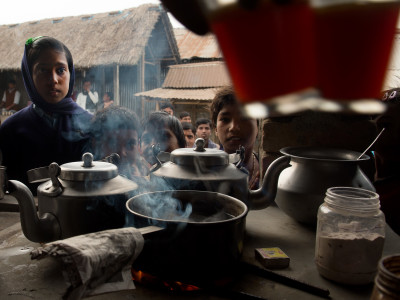
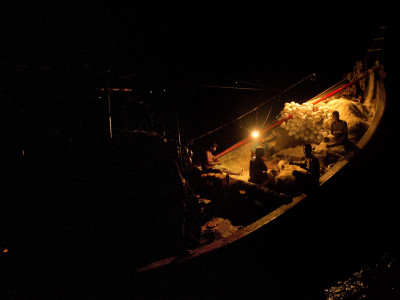
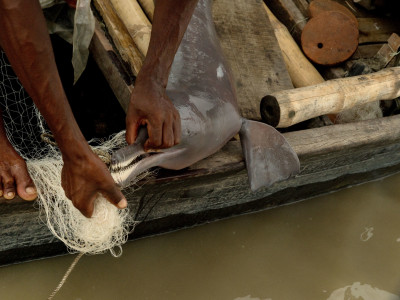
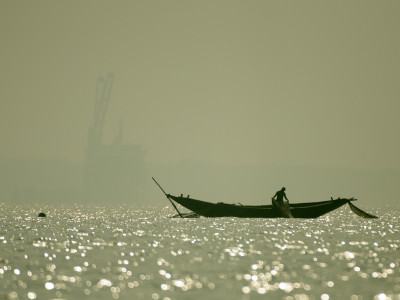
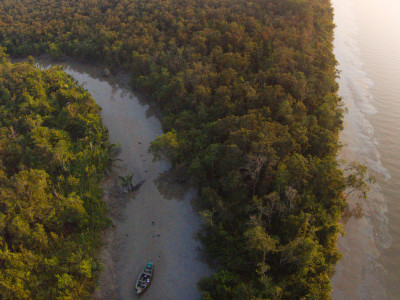
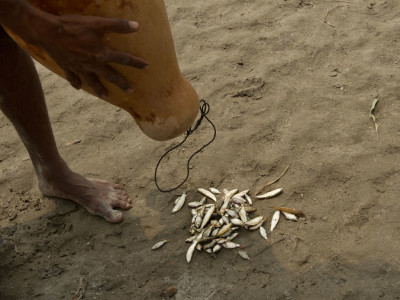
Wow…! Amazing article. There is so much of information which was never known about the Ganga river and people around the basin.